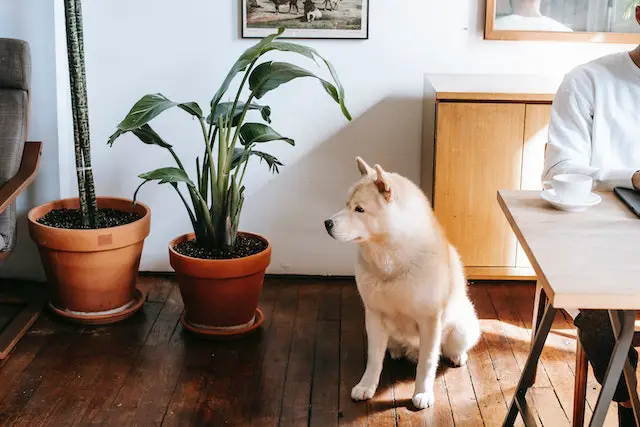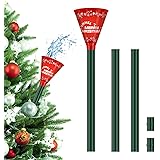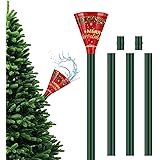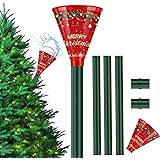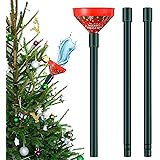Keeping our canine friends safe and healthy is of utmost importance. But this can also include particular aspects of the home, such as indoor plants. Before you rush out and buy any type of plant for your home, it’s important to make sure that the plants you choose are not hazardous to dogs. Allow us to take a look at the best dog safe indoor plants, so you can make sure that your four-legged friend is safe at all times.
Dog Safe Indoor Plants – A Detailed Guide
Most people want to add color and texture to their homes with plants and flowers. If you’re a proud pet owner, though, you should be particularly careful when choosing indoor plants for your home. Not all plants are safe for your four-legged family members, and some pose serious health risks.
In this guide, you’ll learn what plants are safe for dogs, so you can add a touch of the outdoors to your interior decor. Let’s begin!
Which Plants are Safe for Dogs?
Creating a dog-friendly indoor garden isn’t as difficult as it may seem. Here are a few plants which you can bring into your home without worrying about them harming your pet:
- Spider Plant: This low-maintenance plant not only cleans the air of toxins, but it’s also non-toxic to both cats and dogs.
- Bamboo: Most bamboo varieties aren’t toxic to dogs, although the Pandan variety might irritate a dog’s gut and potentially cause vomiting. Stick to the other types for your indoor décor, like upright bamboo or bamboo with twisty culms.
- Valerian: Valerian plants are completely safe for cats and dogs, and they can even be beneficial for your pets. Valerian root is thought to reduce anxiety in animals. Just be sure to remove the root from the plant if your pet shows interest.
- Succulent: Succulents come in a variety of colors and sizes, so you can tailor your home decor according to your tastes. Although some varieties of succulents are toxic to cats and dogs, most are completely safe. Popular choices like aloe, rubber plants, and jade plants are all pet-friendly.
- African Violet: If you’re looking to add a pop of color to your indoor garden, you might consider the African violet. Not only is colorful and easy to tend to, but it is also entirely safe for your pets.
Making sure your beloved pets can be safe in your home is essential. Therefore, when choosing plants, make sure to double-check that they are non-toxic. If you’re still unsure, contact a veterinarian or poison control specialist, who can definitely answer all your questions about safety.
Read More: About How To Get Rid OF Aphids On Sweet Peas
What Are the Potential Dangers of Toxic Plants?
Although opting for pet-safe plants is ideal for pet owners, some plants may still be dangerous — even if they’re not toxic enough to prove fatal.
Let’s explore the potential side effects of pets and toxic indoor plants:
Allergic Reaction
Some plants may cause an allergic reaction when ingested or touched, such as a rash or swelling. If you notice any reactions in your pet, take them to a vet at once as they may need an antihistamine or epinephrine.
Itching and Irritation
Sap from plants like pig-weed, yew, and ivy, as well as pollen from some flowers can cause skin irritation. You should keep your pet away from these plants and examine them regularly for any rashes or swelling, particularly if they’re prone to rolling around in the grass.
Stomach Aftereffects
Ingesting any toxic plant can sometimes cause vomiting and diarrhea in pets. Look out for signs such as listlessness, lack of appetite, or frequent bouts of sickness. If your pet displays any of these symptoms, take them to the vet as soon as you can.
Heart Rate Changes
Some plants contain substances that can lead to a drastic increase in heart rate. In the worst case, it can even lead to death. Some of the most dangerous plants in this sense include Oleander, Castor Bean, Foxglove, Kalanchoe, and Death Camas — to name a few.
Gardening Tips to Keep Your Pets Safe
As a pet owner, you must pay extra attention to ensure your pet’s safety at home. Here is a list of tips which you can apply to keep your indoor garden pet-safe:
- Check if a plant is toxic not only for including it in your garden, but also when you receive a greeting card with wildflower seeds inside or when you bring new plants indoors.
- Read about toxicity or reach out to a veterinarian for further information about the plants you intend to include in your indoor décor.
- Keep your valuable trinkets away from your pets. Dogs may innocently chew the pot or vase, which may contain toxic substances that leak into the soil.
- House plants should only be placed higher up, so your pets simply can’t reach them, no matter how high or low they jump.
- Separate your outdoor gardening materials from your indoor items. Make sure your pet can’t access fertilizer or pesticides, which can be detrimental to their health.
- Allow your pet to wander freely around the garden, but never leave them out of sight. Your pet might decide to help you out with gardening and accidentally consume a toxic plant.
Indoor plants make a wonderful addition to any home. If you are a pet owner, however, you have to take extra precautions to choose pet-safe plants and keep your home pet-friendly.
By learning which plants are safe for dogs, exploring potential dangers, and following some pet safety gardening tips, you have the pleasure of having a pet-friendly garden and a healthy pet at the same time.
With plenty of pet-safe plants available, there is no need to compromise on your home’s aesthetic or your pet’s health.
Read More: About 3 Week Old Tomato Seedlings
FAQs on Dog Safe Indoor Plants
Pet-safe plants are generally not toxic to other organisms such as dogs and cats, but they may also pose a risk to humans if ingested or touched. Therefore, it is important to research before selecting pet-safe plants to ensure they are beneficial for everyone living in the home.
Safe plants for dogs to be around include spider plants, rubber plants, boston ferns, peace lilies, philodendrons, snake plants, pothos plants, dracaena, and orchids.
Some houseplants may be toxic for dogs. Some of the most common toxic plants include aloe vera, lilies, tulips, daffodils, azaleas, foxglove, and oleander. It is important to always research the safety of houseplants before bringing them into the home.
Yes, succulents are generally considered safe for pet-friendly homes. Succulents like aloe vera, cacti, echeveria, and crassula are non-toxic to pets. It is important to research before adding any new plant to a pet-friendly environment.
The best way to keep your dog away from houseplants is to position the plants in areas that your dog cannot easily access. Placing the plants on shelves or tables that your dog cannot reach is a great way to protect them. You can also use baskets to cover the plants to keep your dog away.
Fresh-cut flowers may be toxic for pets. Some of the most commonly toxic flowers include roses, lilies, gladiolus, carnations, and chrysanthemums. Every flower is different and it is important to research the safety of fresh-cut flowers before bringing them into a pet-friendly environment.
Yes, certain plants can help to purify the air in a pet-friendly home. Some of the best air-purifying plants include spider plants, rubber plants, peace lilies, ferns, and aloe vera. These plants help to get rid of toxins and pollutants in the air and help to make the space healthier for everyone.
If your dog eats a toxic houseplant, it is important to seek medical help immediately. Contact your veterinarian or the nearest animal hospital for advice. It may also be beneficial to collect a sample of the plant so that the veterinarian can properly diagnose the symptoms.
Wrapping Things Up
All things considered, pet owners should find plenty of options for dog safe indoor plants to bring life into their home environment. Whether it’s a succulent or a snake plant, there are plenty of options available that are safe for pet-owners to enjoy anywhere. With a little research and an eye for safety, pet owners are well-equipped to give their dog a safe home and healthy environment.
Remember to always research before bringing something new into the home to be sure your pet can enjoy it too. A little extra effort now can prevent pricey vet bills in the long run. With a bit of knowledge and some paw-sitive choices, you can make sure your furry friends stay safe and healthy.
Auto Amazon Links: No products found.
Perfect Plants Christmas Tree Saver 8oz. | Easy Use Xmas Tree Preserver Food | Have Healthy Green Christmas Trees All Holiday Season
$9.97 (as of December 3, 2025 00:36 GMT +00:00 - More info- Product prices and availability are accurate as of the date/time indicated and are subject to change. Any price and availability information displayed on [relevant Amazon Site(s), as applicable] at the time of purchase will apply to the purchase of this product.
Kaiedos Christmas Tree Watering Funnel - 39 Inch Funnel, Reusable Design, Makes Watering Your Live Tree a Snap!
$14.99 (as of December 3, 2025 00:36 GMT +00:00 - More info- Product prices and availability are accurate as of the date/time indicated and are subject to change. Any price and availability information displayed on [relevant Amazon Site(s), as applicable] at the time of purchase will apply to the purchase of this product.
Christmas Tree Watering Funnel, Real Christmas Tree Water Long Funnel About 40 Inch, Trees Watering System for Water Indoor Outdoor
$15.99 (as of December 3, 2025 00:36 GMT +00:00 - More info- Product prices and availability are accurate as of the date/time indicated and are subject to change. Any price and availability information displayed on [relevant Amazon Site(s), as applicable] at the time of purchase will apply to the purchase of this product.
IPOOLTENG Christmas Tree Watering Funnel 3 Tube 1 Funnels 40 Inch - 3 Section Plastic Christmas Tree Funnel Waterer, Long Funnels for Watering Trees, Best Gifts for Your Parents to Water Tree
$15.53 (as of December 3, 2025 00:36 GMT +00:00 - More info- Product prices and availability are accurate as of the date/time indicated and are subject to change. Any price and availability information displayed on [relevant Amazon Site(s), as applicable] at the time of purchase will apply to the purchase of this product.
1 Pack Christmas Tree Watering Funnel System, 44 Inch Christmas Tree Watering Stick with Adjustable 3-Section Design, Reusable & Spill-Free, Xmas Plant Waterer Tool for Indoor and Outdoor
$16.99 (as of December 3, 2025 00:36 GMT +00:00 - More info- Product prices and availability are accurate as of the date/time indicated and are subject to change. Any price and availability information displayed on [relevant Amazon Site(s), as applicable] at the time of purchase will apply to the purchase of this product.
Cuisinart 6.5" Cast Iron Smashed Burger Press, Round Flat Edge Grill Press for Crispy Smash Burgers, Burger Tool for Grill and Griddle Accessories, for BBQs and Tailgates
$24.99 (as of December 3, 2025 16:48 GMT +00:00 - More info- Product prices and availability are accurate as of the date/time indicated and are subject to change. Any price and availability information displayed on [relevant Amazon Site(s), as applicable] at the time of purchase will apply to the purchase of this product.
Muddy Mat® Shown on TV Super Absorbent Microfiber Dog Door Mat for Muddy Paws, Non-Slip Washable Pet Rug, Quick Dry Chenille Entryway Carpet, Machine Washable Indoor Outdoor mat, Grey 30"x19"
$19.95 (as of December 3, 2025 16:48 GMT +00:00 - More info- Product prices and availability are accurate as of the date/time indicated and are subject to change. Any price and availability information displayed on [relevant Amazon Site(s), as applicable] at the time of purchase will apply to the purchase of this product.
Snow Joe Premium Enviro Blend Ice Melt, Green-Coated Deicer Crystals, 50 lb - Safer Melter for Vegetation, Concrete & Metals w/ Anti-Corrosion Calcium Magnesium Acetate
$32.97 (as of December 3, 2025 16:48 GMT +00:00 - More info- Product prices and availability are accurate as of the date/time indicated and are subject to change. Any price and availability information displayed on [relevant Amazon Site(s), as applicable] at the time of purchase will apply to the purchase of this product.
OLANLY Dog Door Mat for Muddy Paws 30x20, Absorbs Moisture and Dirt, Absorbent Non-Slip Washable Doormat, Quick Dry Chenille Mud Mat for Dogs, Entry Indoor Entryway Carpet for Inside Floor, Grey
$9.99 (as of December 3, 2025 16:48 GMT +00:00 - More info- Product prices and availability are accurate as of the date/time indicated and are subject to change. Any price and availability information displayed on [relevant Amazon Site(s), as applicable] at the time of purchase will apply to the purchase of this product.
Zevo Flying Insect Trap Official Refill Cartridges - Fits Both Zevo Trap & MAX Indoor Fly Trap - Authentic Trap+Lock Technology to Catch Gnats, House & Fruit Flys (4 Official Refill Cartridges)
$14.97 (as of December 3, 2025 16:48 GMT +00:00 - More info- Product prices and availability are accurate as of the date/time indicated and are subject to change. Any price and availability information displayed on [relevant Amazon Site(s), as applicable] at the time of purchase will apply to the purchase of this product.

